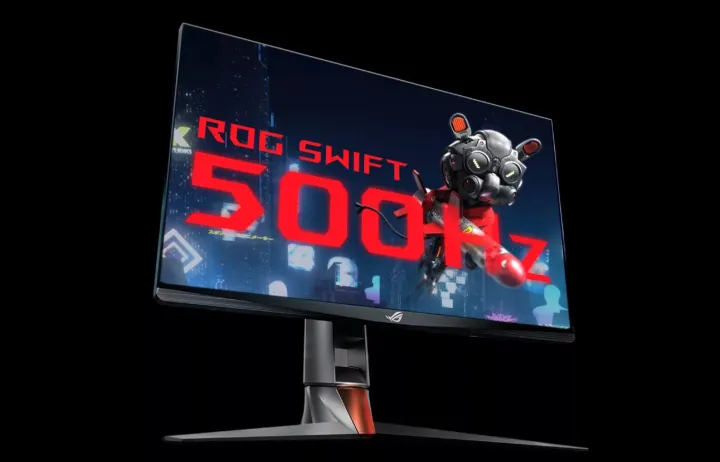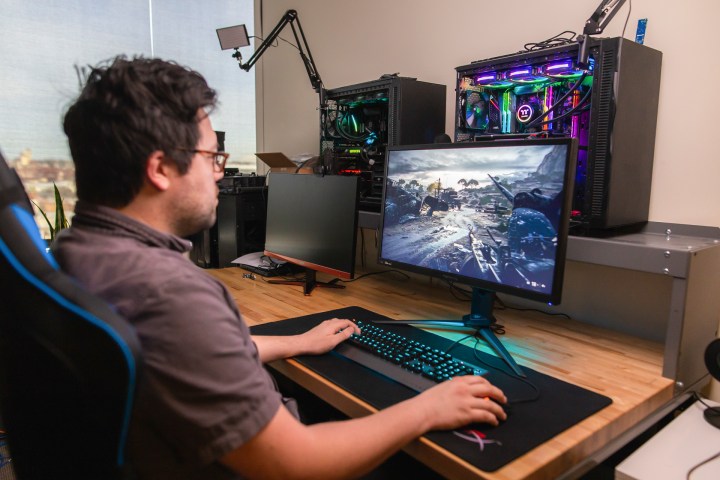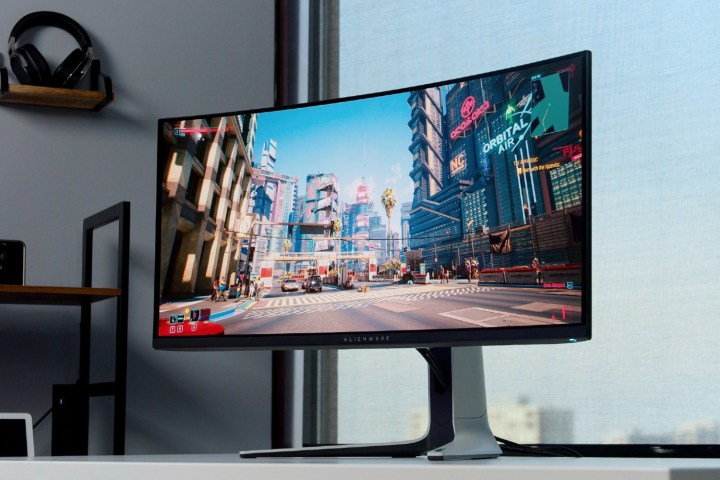High refresh rate gaming has been the focus of much of the display industry in recent years, from 4K 120Hz TVs becoming the norm, to companies pushing even to 500Hz to really stretch the limits of what high refresh rate actually means.
But what’s the point in all of those added refreshes, if in general gamers can’t tell much difference between 120Hz and 240Hz, let alone up to 600Hz, which panel makers say is now coming in 2023? What’s the point of these ridiculous refresh rates?
The same as always: It can make you a better gamer — albeit slightly.
Diminishing returns for refresh rate

The traditional wisdom for a high refresh rate display of any kind is that it improves your gaming experience through more fluid animations. It also reduces screen tearing (without the need for frame-synching technologies like G-Sync and FreeSync). The big reason typically touted for these kinds of
There are diminishing returns, however. A 60Hz display will have a minimum input lag of just under 17ms, but a 120Hz display cuts that in half to around 8 milliseconds. A 240Hz gaming monitor slashes it again to 4.16ms, so 360Hz, 500Hz, and even 600Hz are only really shaving a millisecond or two off of your minimum input lag — other factors notwithstanding. That might matter in a high-stakes game between some of the world’s best players, but even then it’s not going to make a huge difference.
Higher refresh rates bring measurably improved accuracy, even if gamers can’t notice the difference visually.
But that very measurable metric isn’t the only thing that higher refresh rate displays help with. Greater refresh rates also give you more up-to-date information than your opponent. That provides both a measurable few-milliseconds advantage that compounds your improved input lag, but it also makes you more accurate. If your display refreshes that bit faster than your opponents’, showing you where they are in a more granular fashion. That gives you a better chance of firing at where they are right then and there, rather than where the display is telling you they were a few milliseconds ago.
That has a local effect too. The smoothing of animations through more frequent refreshes might be great for added immersion, but it’s also super important for accurate mouse movements. As LTT and other testers have shown, gamers can have a measurable improvement in their accuracy from higher refresh rate displays, even if they don’t notice it themselves. While that effect will likely diminish as we reach higher refresh rates, the fact that the extra, more accurate, more recent visual information can affect your play without you even knowing it, suggests that there’s still some gold to be mined in ultra-high refresh rates.
Age-old gaming wisdom suggests that if you can, having a frame rate that’s double that of your refresh rate is the ideal scenario. It ensures that there’s a frame ready to serve on your display as soon as it’s ready to refresh, and that gives you a big buffer zone so that even in busier parts of a map, or when something visually spectacular happens on screen, your frame rate remains above refresh rate. This also means you don’t need to use frame synching technologies (which would negate your super-high-fps advantage) like FreeSync and G-Sync, as screen tearing at such high frame rates would be almost unnoticeable.

This is a generalization that won’t apply to every game — some work best at specific frame rates — but just because refresh rates are getting higher, shouldn’t mean we stop chasing higher frame rates too.
That might seem like a lofty goal with a 600Hz monitor but think again. Slap together a top gaming PC with an RTX 3090, or even a new-gen 4090, and you’ll easily see 700-800+ frames per second (fps) in games like CS: GO, or Rainbow Six: Siege — high paced games that have often been the vanguard of this kind of high-Hz gaming. You don’t even need to sacrifice resolution. The Tech Chaps made an RTX 4090
That might not quite be the 1,200 fps you’d need to truly double the refresh rate of that almost-unbelievably laptop refresh rate, but it’s not far off. With next-generation hardware in 2023, 1,000 + fps might become the norm in top-tier machines playing some of the older esports that scale well with higher-performing hardware.
We need more OLED

None of this is to evangelize the newly announced 600Hz gaming laptop from BoE. It’s probably redundant because most
What we really need is OLED technology to reach these kinds of heady refresh rates. The pixel response time of OLED is so much faster than that of LCD, just gaming on OLED alone can improve your input lag more than switching to some higher refresh rate displays. If we combined the two? Who knows how good it could get.
We have an early idea, though, with the Alienware AW3423DW giving us a 175Hz QD-OLED design and many reviewers have noted it feels like a far higher refresh rate display because of how responsive it is. Corsair is promising to hit 240Hz on an OLED with its Xeneon Flex, but we’ll have to see how that turns out.
1440p
It should be said that with any of these absolutely cutting-edge, flagship gaming displays, the actual measurable impact for most gamers over much more affordable, reasonable designs is minimal. Their price tags alone should make it clear that these are not designed for mass adoption.
But for those who can afford them? They’re going to be worth considering. If you can legitimately say you might have a shot at becoming a professional gamer, every advantage helps. It won’t make you better, but making it so that your brain doesn’t have to account for additional input lag, letting it accurately lead an enemy before firing without having to anticipate where they might be between frames, is a real advantage, and will give you a better approximation of the LAN gaming you’ll do at competitions without the added latency of online gaming.
AMD’s new graphics cards have DisplayPort 2.1 tech too, enabling
Editors' Recommendations
- Gaming Chromebooks with up to 144Hz panels have arrived, but they’re not what you think
- Nvidia claims 1440p 360Hz monitors as new standard for esports




